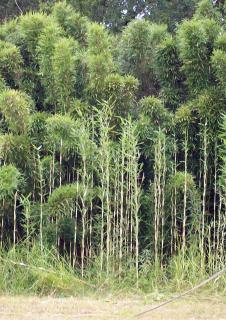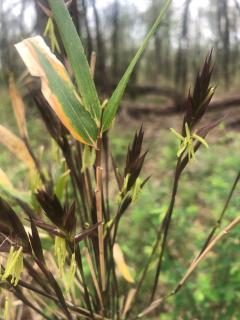River cane might be unfamiliar to some, but for many Indigenous people, it is part of their family stories, daily lives, a familiar presence and widely used material.
River cane is native to floodplains across the South and can grow as tall as a telephone pole. It protects water quality, prevents erosion and intercepts pollutants. Belowground, its networks of rhizomes store large amounts of carbon. It can also be thought of as a cultural keystone species.
“This plant is important to us,” says Roger Cain, a member of the United Keetoowah Band of Cherokee Indians and a tribal ethnobotanist. “For me, it’s part my culture and my heritage. It’s part of our DNA and RNA. It’s part of why we’re Cherokees.”
The river cane ecosystem, known as a canebrake, was once vast. But the canebrakes that once filled the floodplains have been destroyed. “Intact river cane ecosystems are rare,” says Michelle Baumflek, a USDA Forest Service researcher at the Southern Research Station.
River cane is still part of many landscapes, but its footprint has shrunk. It mostly survives in narrow strips alongside rivers and streams. The cane that remains is critically important. In addition to its role in ecosystems, its woody stems can be used to make blowguns, flutes, and other items such as baskets. Basketry is one of the most celebrated ways Indigenous people interact with river cane.

Cane for basketry has characteristics that are not found everywhere. “People were having to travel for hours to get river cane for basket weaving,” says Lexie Rue-Harris, USDA Forest Service tribal relations specialist for the Southern Region.
“During our consultations with Tribes, people kept asking about river cane. They were interested in culturally important plants and river cane rose to the top of that conversation,” says Rue-Harris. “I can’t think of any other plant species in the Southeast that has such a broad range and also such a cultural connection among so many tribal communities.”
River cane is bringing people together. In 2023, 100 people spent four days in Tahlequah, Oklahoma focusing on river cane. About 30 attendees were members of Tribal communities, representing twelve Tribes. Called Rivercane Gathering, the meeting was the result of six years of conversation and collaboration.
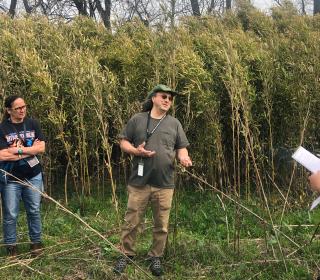
The United Keetoowah Band of Cherokee Indians and the Forest Service co-hosted the meeting. The planning team also included the Choctaw Nation of Oklahoma, the Chitimacha Tribe of Louisiana, and the Jena Band of Choctaw Indians, and the Rivercane Restoration Alliance. Cain, Baumflek, Rue-Harris, and many others including Krista ‘KK’ Langley, a Forest Service program specialist and member of the Alabama Coushatta Tribe of Texas were on the planning team.
“Across the South, Indigenous people are leading the way in river cane restoration,” says Baumflek.
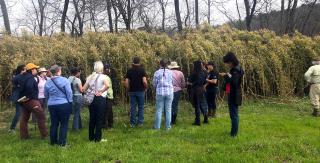
Indigenous elders, artisans, tribal leaders, and many tribal representatives came to the meeting, along with botanists, managers, and others from the Forest Service, and other federal agencies, as well as universities, and non-governmental organizations.
“Our goal was to bring tribal members and federal employees together to talk about river cane,” says Cain. “We wanted federal employees and agencies to see that native people are really excited about it.”
Many sessions focused on river cane’s cultural significance. For example, a panel featured three basket weavers from three different tribes. “This session and others provided a lot of cultural context for the botanists and managers in the room, who know that river cane is important but got to see how and why,” says Baumflek.
Other sessions focused on river cane ecology, and techniques for mapping remaining canebrakes, propagating new plants, and restoration plantings. The sessions reinforced the importance of Indigenous knowledge in restoration efforts, and the discussions helped pinpoint knowledge gaps.
“The information exchanged at the meeting helps identify knowledge gaps,” says Baumflek, who recently developed a new research agreement with Mississippi State University on river cane and carbon storage.
Cane restoration projects are underway on tribal lands and at many national forests in the South, including one led by the Jena Band of Choctaw Indians on the Kisatchie National Forest.
“We have to hang on to river cane and cherish it and tend it,” says Cain.
The Forest Service currently stewards land that is the ancestral homeland of many tribal nations. Working with Tribes to restore, sustain, and improve access to river cane is one of the ways that the Forest Service is putting its Tribal Action Plan into practice.
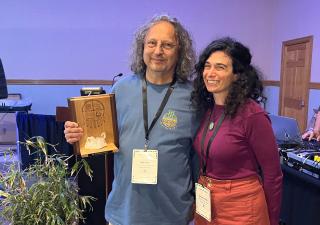
For more information or to view related webinars, please visit the Rivercane Gathering website, email Michelle Baumflek at michelle.baumflek@usda.gov or Lexie Rue-Harris at lexie.rue-harris@usda.gov.

